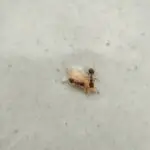How Cold Can Ants Get?
During the coldest months of the year, some species of ants will adapt to the cold by hibernating. Others will huddle together and seek warmth. Among the most common examples are carpenter ants. They can survive cold winters by storing food and fats as glycogen in their bodies.
Some ants also use glycerol to prevent the formation of ice crystals in their bodies. The compound is found in antifreeze and prevents the breakdown of tissue.
The same glycerol conversion also regulates the body’s temperature. This process allows ants to survive in the cold, though they may die if they are exposed to freezing temperatures for too long.
Some ants, such as the carpenter ant, can survive up to 10 days in a refrigerator. Other ant species have adapted to colder temperatures and can survive longer periods of time.
A large mound of dirt over the colony can absorb radiant heat from the sun and provide warmth for the ants below. Ant colonies also block cold air from entering. If there is a satellite colony inside the home, it may also hibernate.
Aside from these strategies, some ants will move to a warmer spot when the temperature drops. They can also take shelter in their nests. Some ants can even burrow underground. These ants can survive in temperatures as low as 52 degrees Fahrenheit.
When ants get cold, they enter a dormant state, called diapause. In this state, ants slow down their metabolic processes to conserve energy. The body temperature of ants also drops slightly. They will also close their exoskeletons. This allows them to store extra fat beneath their skin for warmth. The ant’s metabolic activities slow down for about four days.








